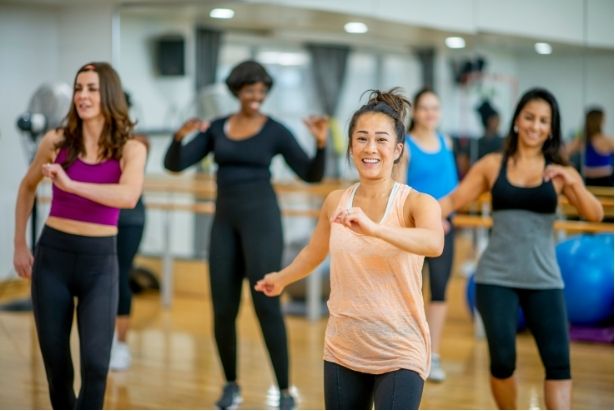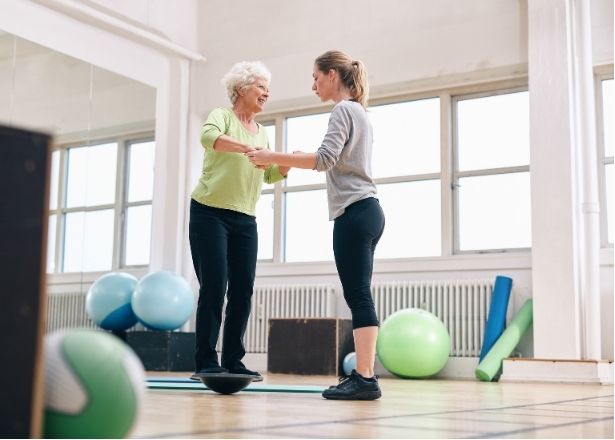Safeguarding Your Fitness Journey: 10 Tips to Avoid Injuries When Starting a New Exercise Routine
Embarking on a new workout routine is an exciting and empowering step towards a healthier lifestyle. Sometimes, our eagerness to achieve fitness goals can lead to overexertion and injuries, especially when jumping back into exercise after a time of inactivity.

To ensure a safe and effective start to your fitness journey, here are 10 tips from Brevard Health Alliance (BHA) sports medicine and health education experts to help you avoid injuries and stay on the active path.
1. Take Your Time and Increase Difficulty Slowly
When starting a new workout routine or getting back into the gym and it’s very tempting to take on more than you can handle to challenge yourself. Resist the urge to push yourself too hard too soon. If you are working with weights, make sure to start with weight that you can lift 10 to 15 times with proper form. If you are taking a group fitness class, be sure to choose a class that matches your experience level and don’t be afraid to use any modifications.
As you get stronger and more confident, gradually increase the intensity and duration of your workouts to allow your body to adapt and build strength over time. This approach reduces the risk of strains, sprains, and other injuries associated with abrupt changes in physical activity. A moderate approach can also be a more positive and comfortable experience, making it more likely that you will look forward to times you can exercise.
2. Warm Up Before Every Workout

A proper warm-up is crucial to prepare your muscles and joints for the upcoming physical demands. Spend 5-10 minutes engaging in light aerobic activities, such as jogging or jumping jacks, followed by dynamic stretches to enhance flexibility. If your workout is jogging or running, be sure to spend the first few minutes of your outing at a slower, warm-up pace before jumping right into a training run.
Warming up increases blood flow, improves muscle elasticity, and reduces the likelihood of injury during your workout.
3. Increase One Variable at a Time
As you get stronger and build endurance, you will want to increase the difficulty of your workouts to continue to make physical gains. When modifying your routine, focus on changing just one variable at a time. If you are lifting weights, you can choose to either increase weight or repetitions, but not at the same time. In a group class, you may choose to take on more challenging options or increase the intensity of your effort.
Whether it’s intensity, duration, or frequency, remember to pick just one thing to adjust. A measured approach allows your body to adapt gradually, minimizing the risk of overtraining injuries.
4. Hydrate
Proper hydration is fundamental for your overall health and plays a vital role in preventing exercise-related injuries. Dehydration can lead to muscle cramps, fatigue, and impaired performance. Be sure to drink water before, during, and after your workout to stay properly hydrated.

5. Focus on Good Form
Maintaining proper form is one of the most important tips for anyone who wants to work out safely and effectively. Poor technique reduces your workout’s effectiveness and increases the risk of strains and injuries.
When learning a new exercise or using a new machine, be sure to check the instructions and pay attention to your body alignment. Your best bet is to seek guidance from a fitness professional, whether that is the teacher of your class or one of the trainers at your gym.
6. Get Help When You Need It
If you’re unsure about your form, the appropriate exercises, or how to use equipment, don’t hesitate to seek help. Many people can feel intimated when at the gym or in a group class and feel self-conscious when asking for help. Remember that you have to start somewhere and it’s smart to tap into other people’s expertise and support.

If you have the means, consider hiring a certified personal trainer, attending fitness classes, or consulting experienced friends.
As a BHA patient, you have access to a certified Health Educator that can help you develop a customized exercise and nutrition plan that meets your unique needs. Professional guidance can significantly reduce the risk of injuries and ensure you’re getting the most out of your workouts.
7. Remember to Cool Down
Just as warming up is essential, a proper cool down is equally important. Spend a little time at the end of your workout for static stretching to improve flexibility and reduce muscle soreness. Cooling down aids in the gradual return of your heart rate and blood pressure to resting levels, promoting recovery.
8. Take Time to Rest and Recover
Rest days are not an indulgence, they are a necessity. Allow your body time to recover from the physical stress of exercise. Overtraining can lead to fatigue, weakened immune function, and an increased risk of injuries – all things that can derail you from taking steps on your fitness journey. Listen to your body, and schedule rest days or low-intensity activities into your routine.
9. Replace Your Shoes When Needed
Worn-out or inappropriate footwear can contribute to various injuries, especially when engaging in high-impact activities like running and high intensity training (HIT). Check your shoes regularly and replace them if the soles are worn or the support has diminished. Invest in quality footwear that suits your specific workout needs. Consider talking to a podiatrist for recommendations on footwear, assessment of your gait, and help in preventing sports related injuries.
10. Mix Up Your Routine
Repetitive strain injuries can occur when the same muscle groups are constantly subjected to the same movements. Change up your workout routine by incorporating different exercises and activities. This not only prevents overuse injuries but also makes working out more effective and more fun by keeping your body and mind challenged.
By implementing these 10 tips, you’ll not only reduce the risk of injuries but also enhance your overall well-being. With a little bit of patience, planning and consistency, you’ll find yourself cruising down the path of a rewarding fitness journey.
Talk with you primary care provider today about developing a plan that’s right for you. Or call us at 321-241-6800 to schedule an appointment with a Health Educator.
















































































































































